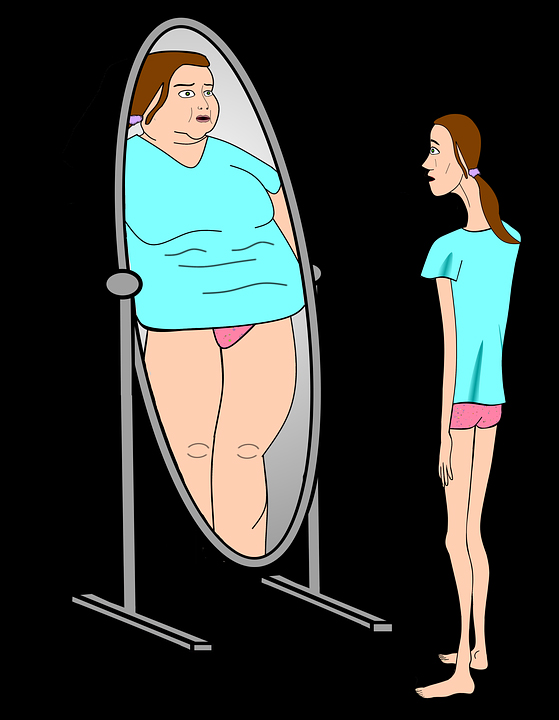Eating Disorders Are Still Taboo
April 25, 2019
Walking through the halls, students see awareness posters for bullying, drinking and driving, and drug abuse. However, there are few if any dedicated to a serious issue for our demographic: eating disorders.
According to a ten-year study conducted by The National Association of Anorexia Nervosa and Associated Disorders (ANAD), an estimated 11% of high school students have been diagnosed with an eating disorder. High school is an environment in which it is easy to hide a disorder because students can binge or skip meals without parents being aware. Just as school can hide lack or excess eating, it also allows students to wallow in depression or anxiety without others finding out. Since the school environment is what fosters the growth of these disorders, more faculty and administration should be aware of and involved in this problem.
Experts have not come to a consensus to the cause of eating disorders, but the general belief is that they are the result of behavioral, biological, and social factors. For example, genetics, unpleasant experiences/trauma, peer pressure, teasing, family members with eating disorders, etc. The start of the disorder includes significant weight loss and unhealthy methods of maintaining that loss. Pre-adolescence and adolescence are particularly affecting emotionally. All these statistics provide evidence that high school students are the most influenced by eating disorders. So why isn’t something being done about it, especially by high schools and their administration?
Signs to recognize Anorexia:
-Hiding or discarding food
-Denial of feelings of hunger
-Social withdrawal/emotional change
Signs to recognize Bulimia Nervosa include:
-Eating unusually large amounts of food with no apparent change in weight
-Frequent trips to the bathroom after eating/clogged toilets or showers
-Overachieving and impulsive behaviors
Signs to recognize Binge Eating Disorder:
-Eating unusually large amounts of food in a distinct period of time (2 hours)/eating rapidly
-Eating when stressed or when feeling uncertain how to cope
-Feeling that they are unable to control how much they eat and disgusted with themselves afterward
A research team from the University of Pittsburgh School of Medicine analyzed 1,765 American adults aged 19 and 32 years old in 2016. Their findings revealed that the risk of developing eating disorders was 2.2 times greater in subjects who spent the most time engaged with social media each day. For those with eating disorders, comparing themselves to others is common, and social media provides a perfect outlet to do that. Most users post filtered, photoshopped pictures that reinforce the idea that skinny and toned bodies are better. Those with disorders also tend to measure their achievements against someone else’s, and social media can make someone feel “unaccomplished.”
Not all social media is bad, however. Many advocates use social media to address body shaming and eating disorders. Ashley Graham, a size-16 model, tags her Instagram photos #beautybeyondsize and inspires others to feel confident with their bodies, regardless of whether they conform to traditional beauty standards. Her campaign has had a fundamental impact on the lives of many. “A woman who was bulimic for six years said she stopped throwing up after she watched my TED Talk,” she said in an interview with Glamour.
Utilizing this kind of influence could be vastly important to the student population of Coronado. The first step to addressing these disorders is learning about them. Start training teachers, nurses, counselors, and other school administrators to recognize the signs of an eating disorder in a student; early intervention is a key factor in trying to help. Coaches, in particular, are able to see the signs of a disorder in their student-athletes because of the eventual physical effects a disorder causes.
Other ways a school can be more involved is by providing more information on eating disorders during health classes. This would allow students to possibly recognize it in themselves and reach out for help. Have schools focus specifically on the Body Mass Index to inform students what a healthy weight range is.
Bullying is also a big dilemma in schools, but weight-related bullying can cause more problems, in regard to eating disorders. Adopting or updating anti-bullying policies can help raise awareness.
Another helpful tool is a screening method administrated by school nurses or pediatricians that can identify the students at risk of developing an eating disorder that way it can be prevented beforehand.
This problem is not something that can be prevented overnight, but with a little more acknowledgment, a difference can be made. Educating yourself on tough, controversial issues can be difficult, but school is all about learning. By becoming more aware that there is a problem to begin with, so many lives can be helped and saved.
